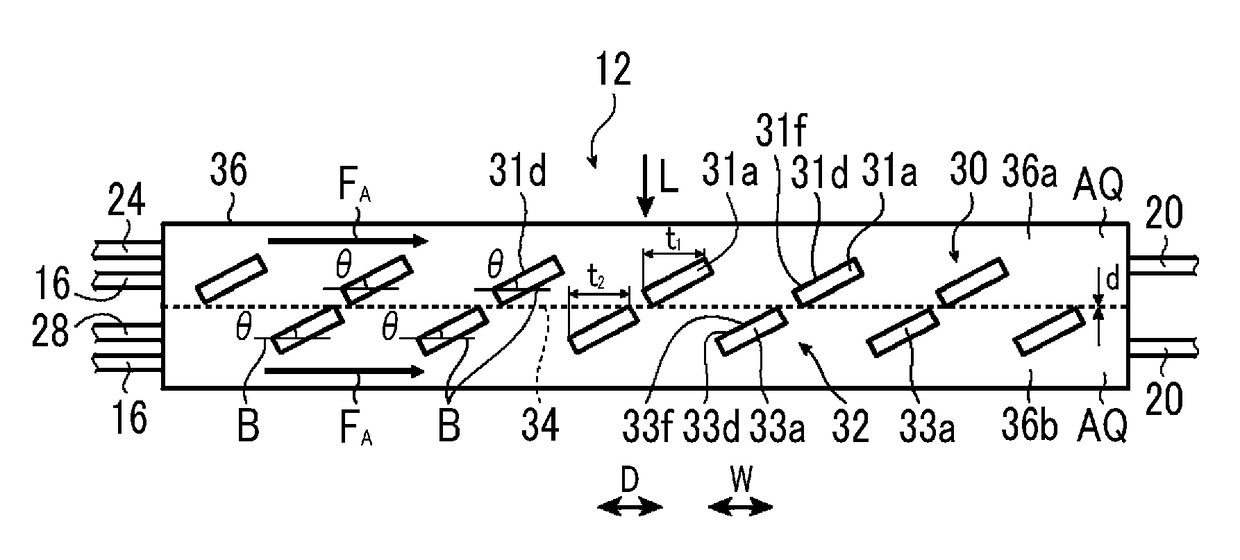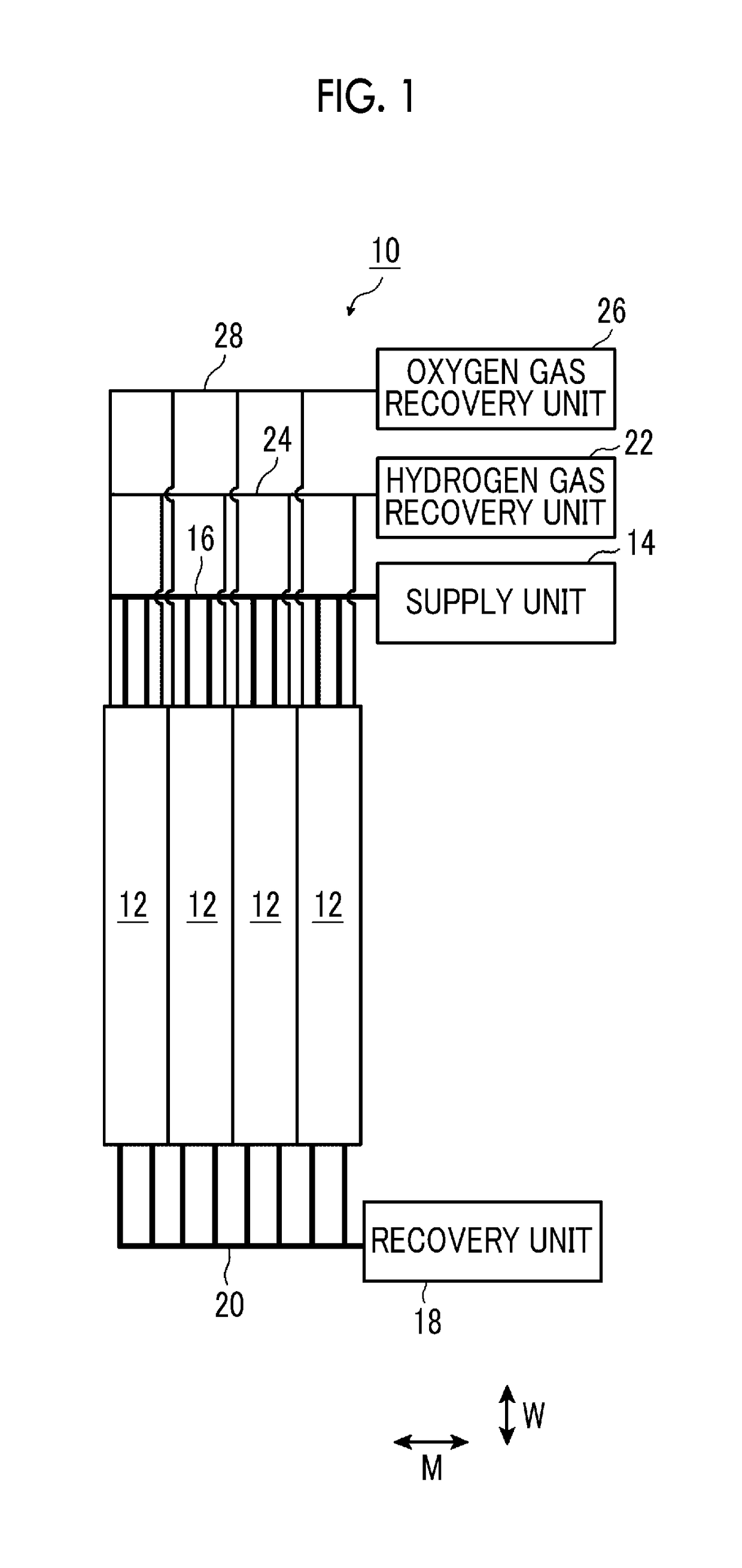Artificial photosynthesis module
a photosynthesis module and artificial technology, applied in the direction of electrolysis process, electrode with substrate and coating, electrolysis components, etc., can solve the problems of poor electrolysis efficiency, decrease in electrolysis efficiency, and poor electrolysis efficiency, and achieve excellent energy conversion efficiency
- Summary
- Abstract
- Description
- Claims
- Application Information
AI Technical Summary
Benefits of technology
Problems solved by technology
Method used
Image
Examples
example 1
[0438]Hereinafter, the effects of the artificial photosynthesis module of the invention will be described in detail.
[0439]In the present example, in order to confirm the effects of the electrode configuration of the invention, artificial photosynthesis modules of Examples Nos. 1 to 7 and Comparative Example No. 1 illustrated below were made.
[0440]In the present example, the artificial photosynthesis modules of Example Nos. 1 to 7 and Comparative Example No. 1 were controlled by a potentiostat such that the current densities of a hydrogen generation electrode and an oxygen generation electrode became 8.13 mA / cm2 while the electrolytic aqueous solution AQ was supplied thereto. Changes in electrolysis voltage were measured from the start of the control, and electrolysis voltages (V) after 10 minutes were obtained. Then, the electrolysis voltages (V) after 10 minutes were set to representative values of the electrolysis voltages of the artificial photosynthesis modules. The results are ...
example no.1
Example No. 1
[0445]In an artificial photosynthesis module of Example No. 1, a hydrogen generation electrode and an oxygen generation electrode are comb-type electrodes. Electrodes (Exeload EA: JAPAN CARLIT CO., LTD.) obtained by performing platinum plating treatment of a thickness of 1 μm on the surface of a base material made of titanium were used for the hydrogen generation electrode and the oxygen generation electrode.
[0446]In the hydrogen generation electrode and the oxygen generation electrode, respectively, in a state where the entire electrodes are in a flat-plate-shaped state, the electrode dimensions are 32 mm×120 mm×Thickness 1.0 mm, comb teeth have Width 3 mm×Length 32 mm×Number of teeth 15, and the width between the comb teeth is 5 mm. In a state where the entire electrodes are in a flat-plate-shaped state, the gap spacing of the hydrogen generation electrode and the oxygen generation electrode in a state where the comb teeth of the hydrogen generation electrode and the ...
example no.2
Example No. 2
[0450]An artificial photosynthesis module of Example No. 2 has the same configuration as Example No. 1 except that the flow rate of the electrolytic aqueous solution AQ is 1.0 liter / min, as compared to Example No. 1. For this reason, the detailed description thereof will be omitted.
PUM
| Property | Measurement | Unit |
|---|---|---|
| tilt angle | aaaaa | aaaaa |
| tilt angle | aaaaa | aaaaa |
| width | aaaaa | aaaaa |
Abstract
Description
Claims
Application Information
 Login to View More
Login to View More - R&D
- Intellectual Property
- Life Sciences
- Materials
- Tech Scout
- Unparalleled Data Quality
- Higher Quality Content
- 60% Fewer Hallucinations
Browse by: Latest US Patents, China's latest patents, Technical Efficacy Thesaurus, Application Domain, Technology Topic, Popular Technical Reports.
© 2025 PatSnap. All rights reserved.Legal|Privacy policy|Modern Slavery Act Transparency Statement|Sitemap|About US| Contact US: help@patsnap.com



